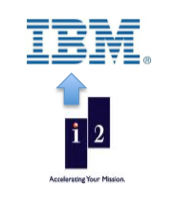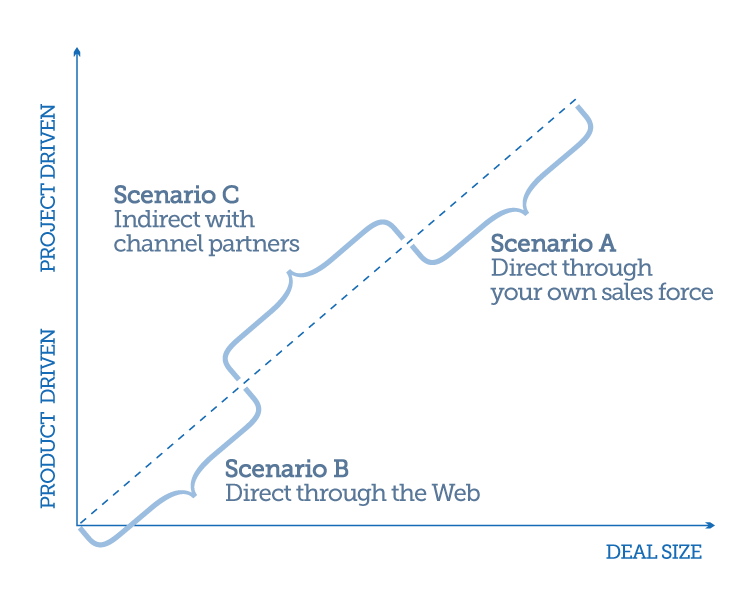I the video I discuss the principles for when we can choose the indirect approach through independent channel partners and when are we better off going directly to the markets.
This is the first video in the “Building Successful Partner Channels” series of five videos that TBK Consult have made for the Microsoft Smart Partner Marketing portal.
Using a channel of independent companies to find, win, make, keep and grow happy customers on our behalf has a long tradition in the software industry. For some software companies the indirect channel has been a major contributor to global success, but for most software companies making it work remains a constant struggle.
I am Hans Peter Bech and in this video, I will discuss the principles for when we can choose the indirect approach through independent channel partners and when are we better off going directly to the markets?
The choice between serving customers directly through your own marketing and sales efforts or using independent resellers or channel partners that operate in their own name, at their own risk and at their own expenses is highly affected by the nature of your business model.
There are basically three scenarios to consider:
In the A-scenario our product is the basis for big projects with a high price tag. Our potential customers will have a committee assigned to drive the project and one of their tasks is to select the vendor. From our perspective such projects are complex and risky because there are many decision makers with different agendas, the sales cycles are long and losing such deals are very expensive.
A-scenario companies typically choose a direct go-to-market approach for two main reasons:
- The first reason is lack of resellers. In the market for a specialized, comprehensive and customizable solution there seldom are any independent channel partners readily available to find, win, make, keep and grow enterprise customers on our behalf.
- The second reason is the uncertain growth potential for an independent reseller. As the learning curve for mastering these types of solutions is long and steep, and as there are only very few deals open in the market at any time, and as the sales cycles are long and the customers clearly prefer being served by the vendors directly, the growth potential for independent resellers is very uncertain.
So vendors in the A-scenario not only prefer, but are also left with no other choice than the direct go-to-market approach.
This situation may change as we establish our brand.
When we have build a solid market share in scenario A it is not unusual to be approached by potential implementation partners.
Implementation partners are not interested in – and also seldom very good at – selling our solution. They are attracted by the service business around our product. It may actually be very interesting for us to establish a network of implementation partners as they will enhance our delivery capacity. When companies in the A-scenario are successful with their sales efforts exactly the delivery capacity often becomes a critical bottleneck
In the B-scenario we are in the opposite end of the chart. We have a simple and inexpensive product addressing a huge volume market.
Having a simple standard solution with short sales cycles addressing a large market doesn’t benefit from using independent channel partners.
The partners have little value add potential and they need to build a volume business to achieve profitability. Independent channel partners are seldom the best resource for generating volume sales of simple products.
In the B scenario you will be approached by potential resellers when you have established your brand. When there is a steady demand in the market for your value proposition, potential resellers can bundle your products with their current offerings and increase their share of customer’s wallet without increasing their sales expenses.
Likewise, you may see an opportunity using resellers to reach segments of the market where your direct reach is weak.
The best opportunity for an indirect go-to-market approach based on independent channel partners is the C-scenario.
The C-scenario, where our solutions are addressing the small and medium enterprise market, with moderate sales cycles and with value-add potential for the channel partners, is already served by independent channel partners. The channel is already there.
In the C-scenario there is enough market volume to support many partners and as each partner can make extensions to the product, they do not have to compete head on for the same business.
The value add potential will improve the channels partners’ margins and make the individual business deal much more profitable for them.
With the channel partners’ extensions and implementation capacity we can reach a much bigger market than we could ever reach with our own resources.
The partners benefit from our branding efforts and the joint activities of us and our partners help create even more awareness and stimulate demand.
Summing it up:
Very comprehensive products addressing enterprise customers and very simple products addressing the mass market should be sold directly though our own marketing and sales operations.
Products with a value add opportunity addressing small and medium sized organizations can benefit substantially from being sold through the already available channel of independent value added resellers.
First published on www.tbkconsult.com


